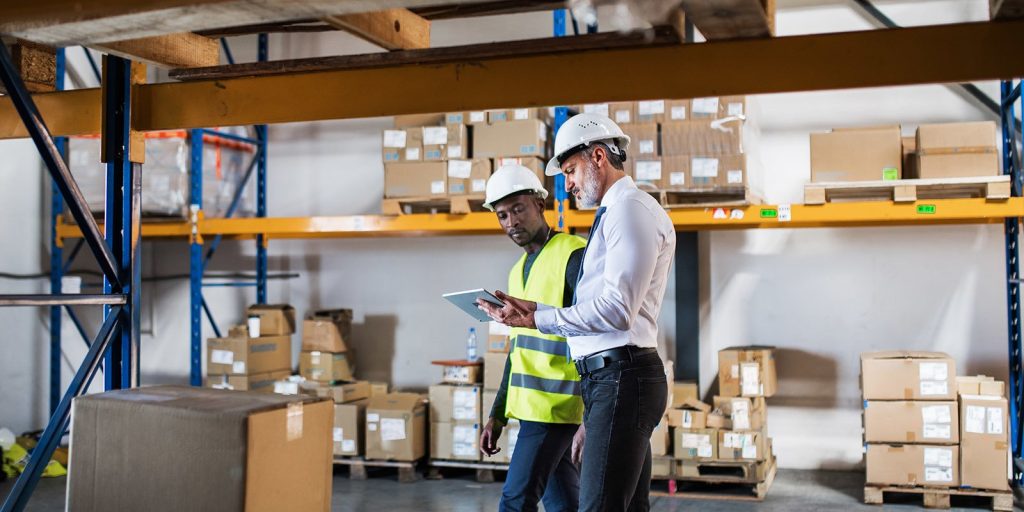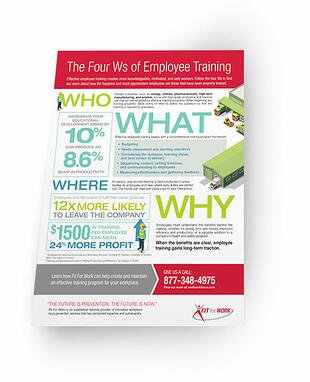In order to experience long-term success and employee retention , your business needs to prioritize ergonomics. A failure to do so not only puts your workers at risk, but also negatively impacts your organization’s bottom line and reputation.
It’s important to note, however, that proper ergonomics isn’t just a one-and-done task you can pay attention to for a day and then check off your to-do list. It’s not enough to have an expert on site to point out glaring issues and then leave you to deal with them on your own.
Nor is it enough to point out the issues, implement solutions, and leave under the assumption everything is and will be taken care of for the foreseeable future. Tasks change, new hires come on board, and the industry and your processes both evolve over time.
Your ergonomic strategy needs to, as well.
This is the ongoing support subscription-based ergonomics from Fit For Work delivers to businesses throughout the country.
A Boots-on-the-ground Approach
For ergonomics to be done right, your safety team needs a combination of on-demand and face-to-face access to ergonomic experts dedicated to serving their unique needs and those of your organization. Our team members are on site regularly, working closely with your employees and gathering information to serve as part of an ergonomic risk assessment.
The primary goal of an ergonomic risk assessment is to decrease the potential for and severity of work-related injury due to several key factors. These factors include:
- Awkward and/or static postures – When the body is forced into a position that requires harder work, injury is more likely.
- Contact stress – Contact points pressed against surfaces compress nerves and reduce blood flow in limbs. This puts increased stress on muscles and on the body as a whole.
- Repetition – Spending a higher percentage of the work day repeating a certain task increases a worker’s risk of injury.
- Vibration – The effects of sustained vibration are similar to those of contact stress and include the potential for internal organ damage.
- Forces – More force (weight or distance) required to complete a task leads to a higher risk of injury.
These factors add up over time and can amount to a significant toll on the body. The ergonomic risk assessment aims to pinpoint these issues and translate them into deliverable solutions with the help of Certified Professional Ergonomists (CPEs) .
Ergonomic Solutions from a CPE
CPEs specialize in the application of theory, principles, data, and methods to design solutions that optimize human well-being and overall system performance. In other words, they leverage science and an expertise of the working environment to reduce your employees’ likelihood of injury.
In the context of our subscription-based service, CPEs take what is discovered during the risk assessment phase and analyze it to help produce:
- New processes
- Functional job descriptions
- Post-offer tests
- And more
This all works toward the goal of reducing soreness and injuries related to musculoskeletal disorders (MSDs).
Deliverables are then seamlessly integrated within your organization by way of a turnkey approach, ensuring your leadership and your workers have everything they need to understand and apply this new information for lasting effectiveness.
The ROI you’ll experience with this approach is second to none. The annual cost of an ergonomic subscription is approximately 1/3 the cost of a single ergonomic project, meaning you experience year-round, on-demand support for a fraction of the cost of a one-time solution.
Achieve Long-term Ergonomic Success with Fit For Work
The longer-term approach of our 12-month ergonomic subscription helps us get to know your organization and your workers so our solutions can truly work for you.
It establishes an ongoing relationship that allows us to assess preexisting risks, implement a plan to mitigate those risks, and optimize beyond implementation for continued improvement.
Contact Fit For Work today to begin experiencing the difference onsite ergonomic support can make for your businesses on a subscription basis.





